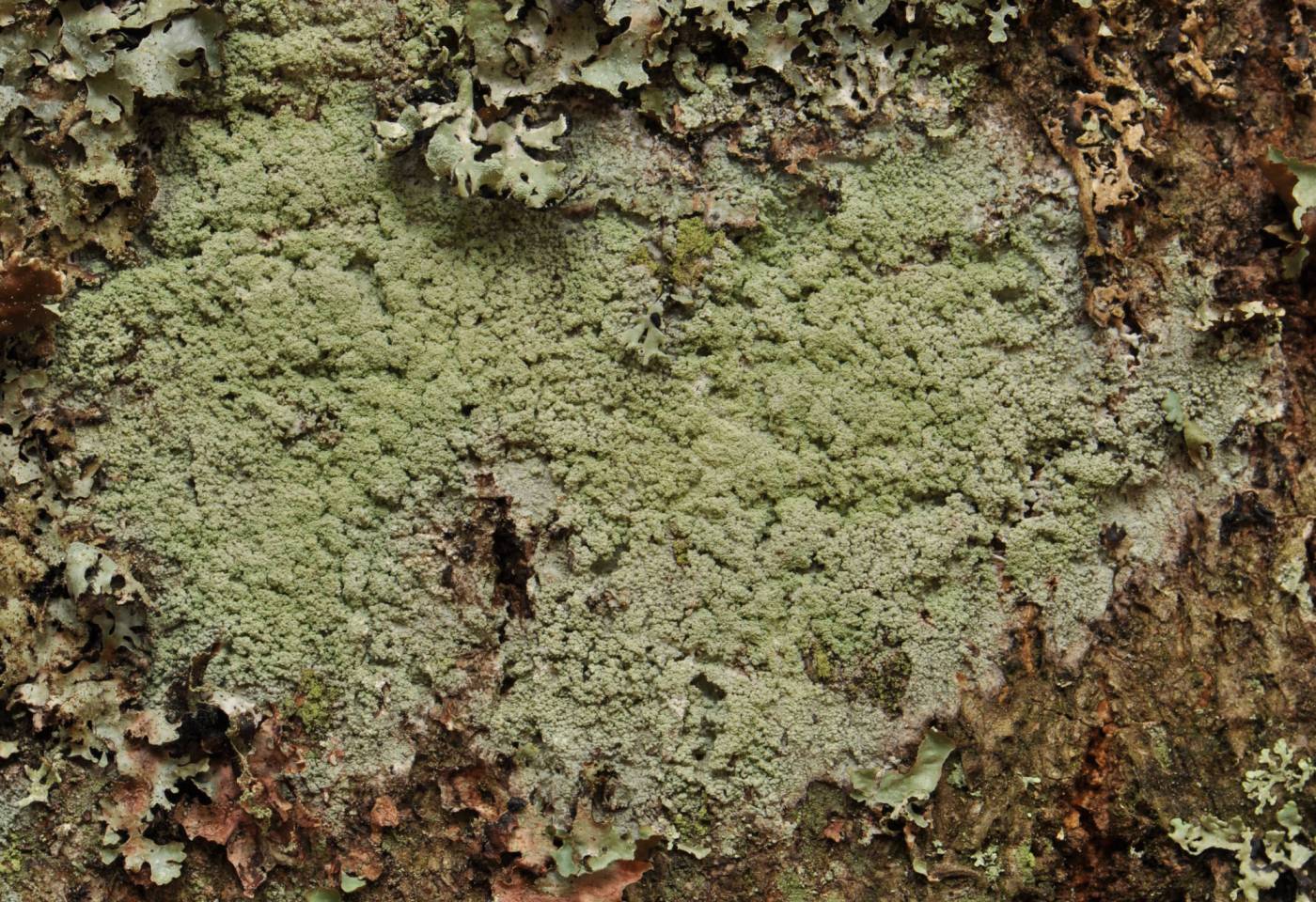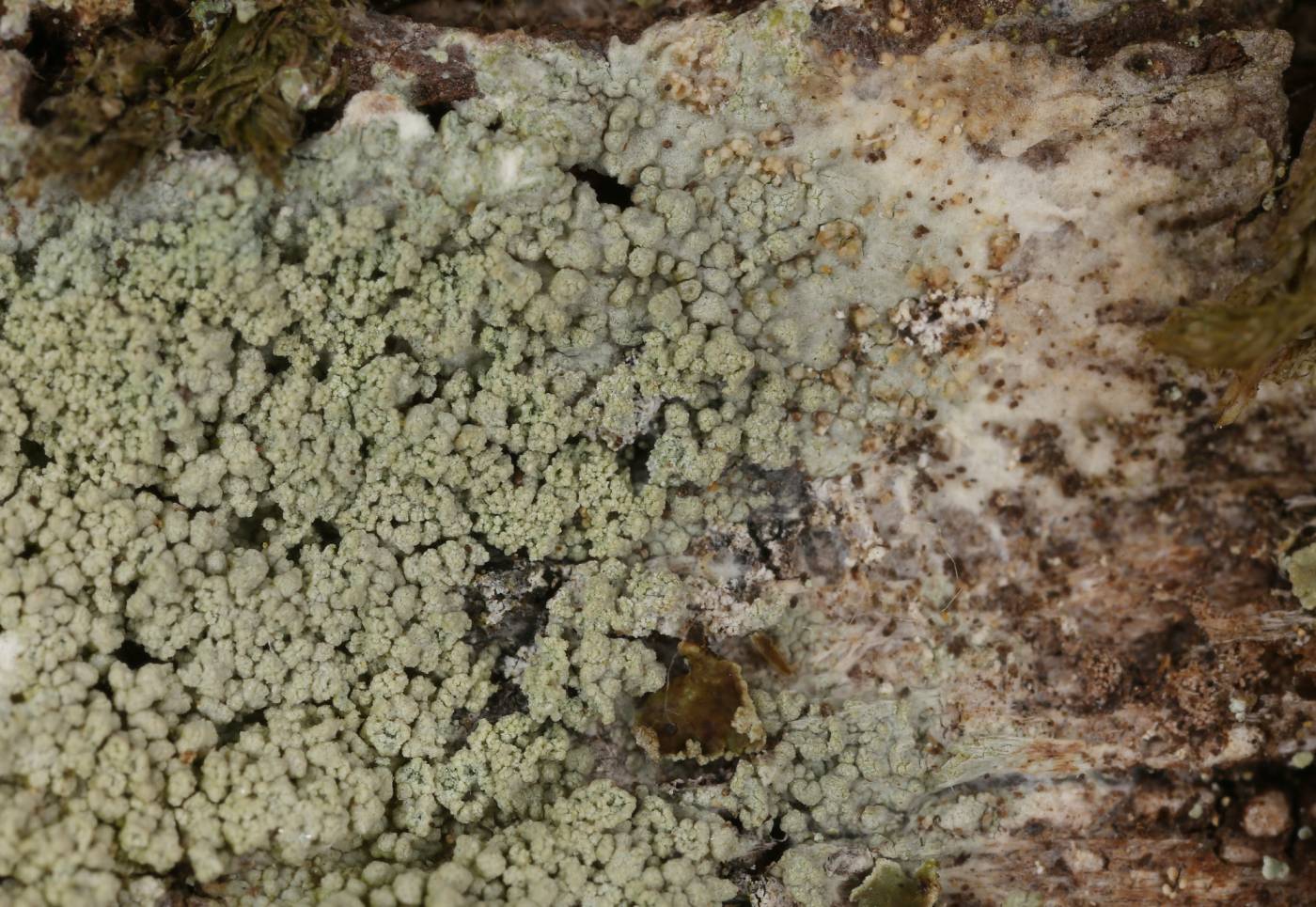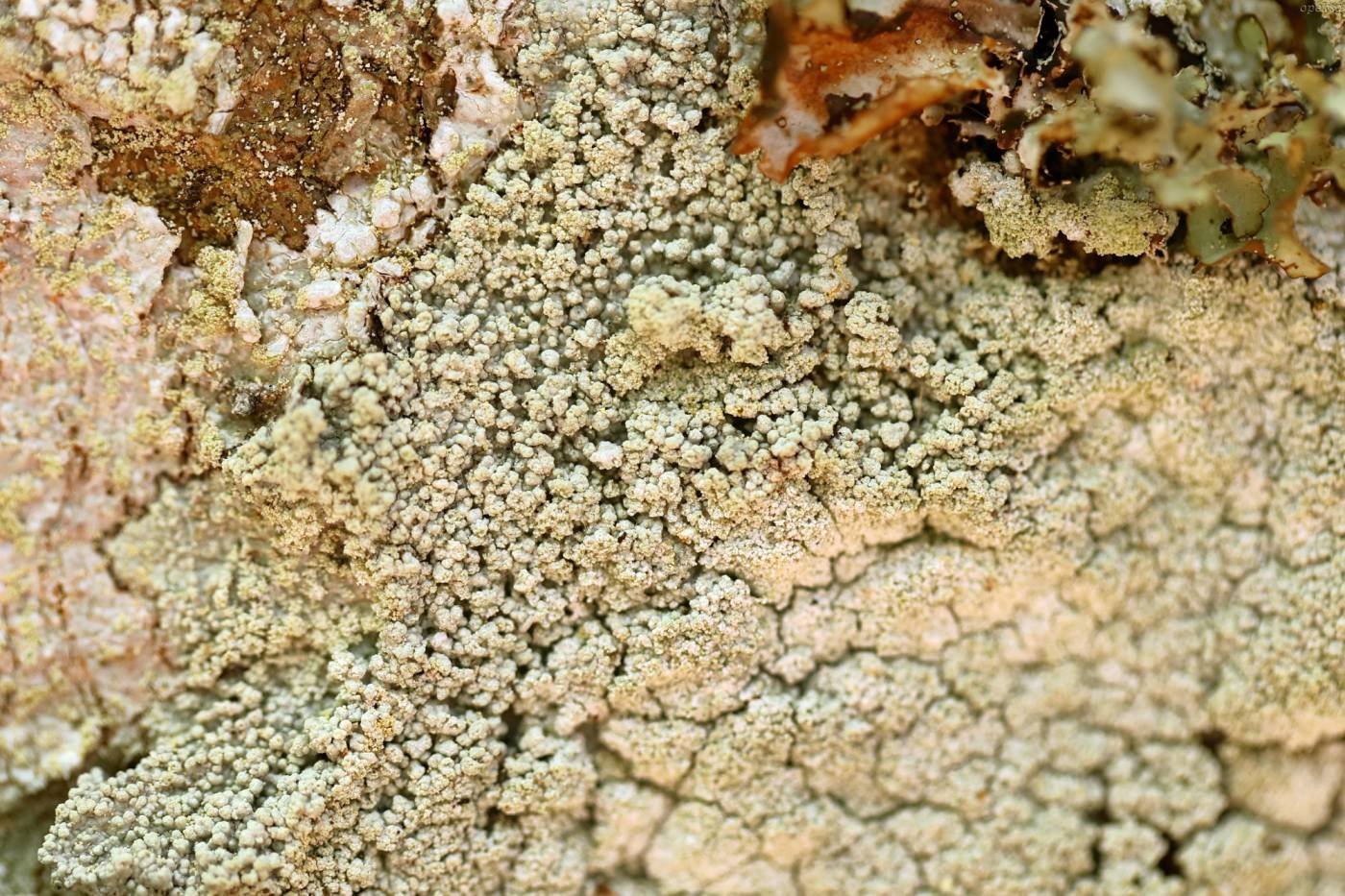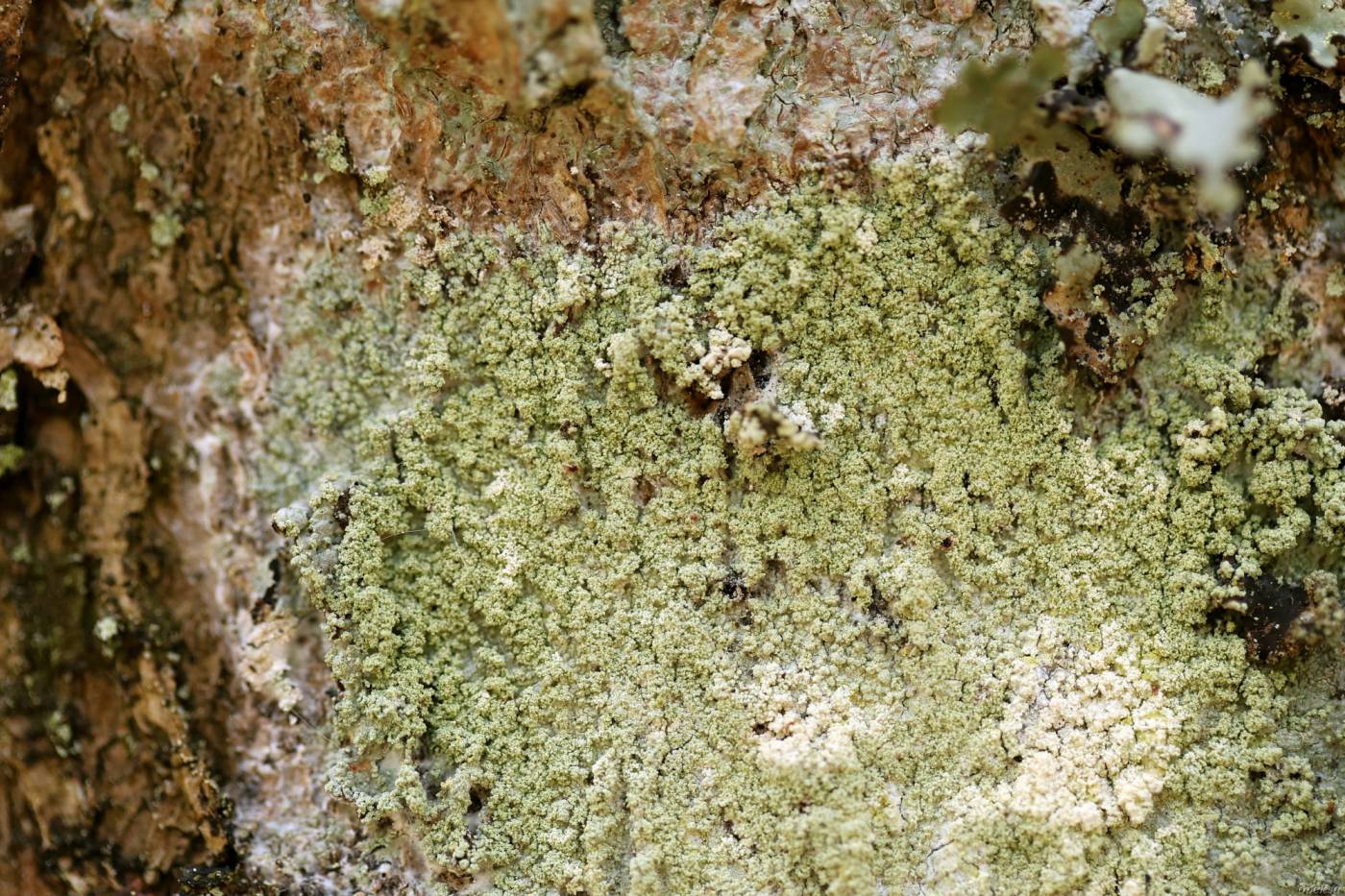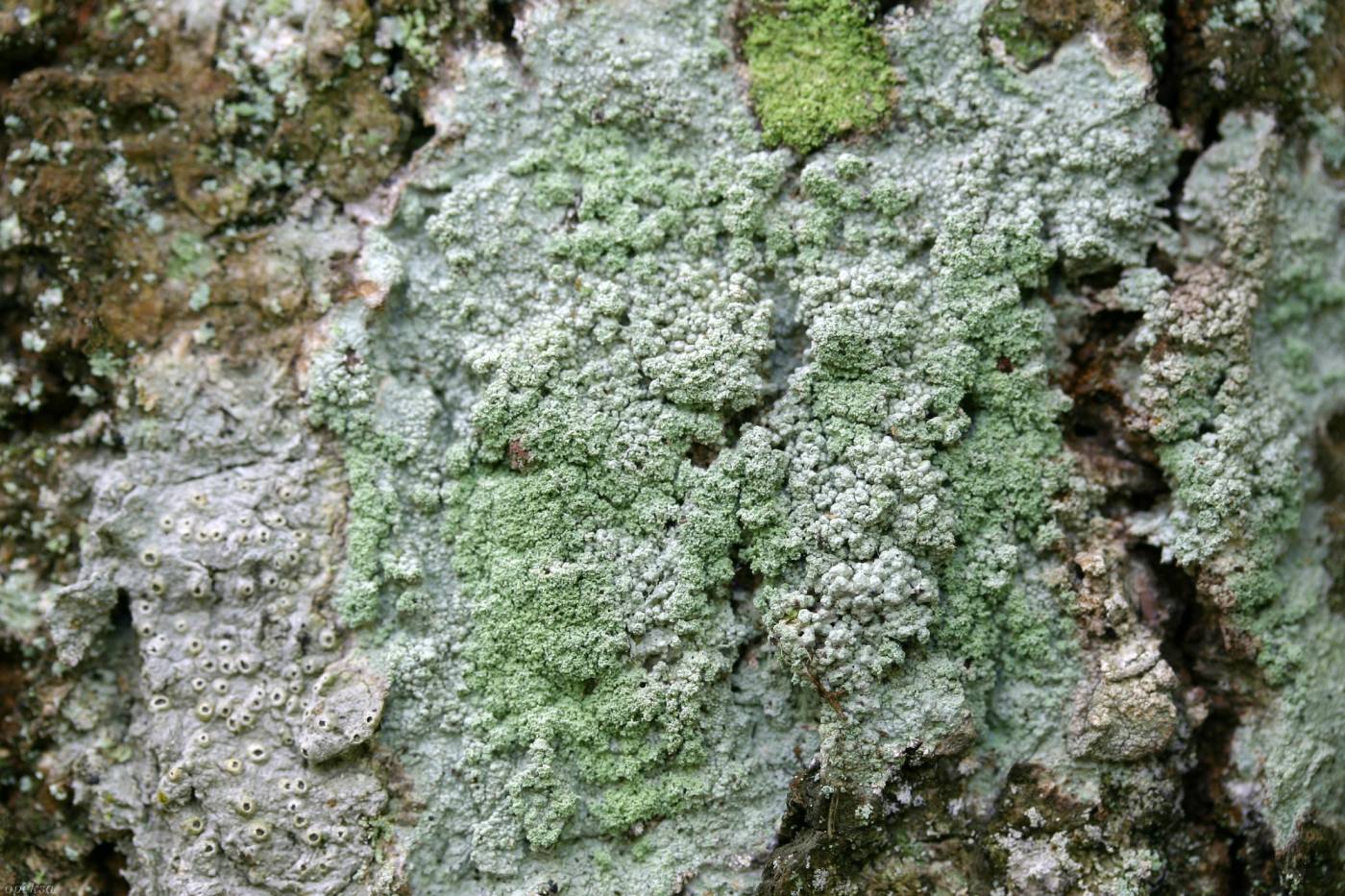Morphologically, this lichen is characterized by a tuberculate thallus and ±confluent soralia that cover almost the entire thallus in well-developed specimens. The tuberculate or pustulate areoles may resemble coarse isidia. Soredia develop primarily at their apices. These are the main differences from the related and chemically identical species L. chloropolia (Ptach-Styn et al. 2024).
Predominantly a boreal-montane epiphytic lichen. In the Czech Republic, its centre of distribution is in natural foothill and mountain forests. It may be found also in managed forests of suitable humidity. Most often, the species grows on acidic bark of beech and spruce. It may be abundant, for example, in old-growth beech or waterlogged spruce forests and in pine forest bogs. Due to acid rain, L. elatina disappeared from some areas and, in consequence of acidification, it partially passed from conifers to deciduous trees. Currently, the species is relatively abundant only in the Šumava Mts and Novohradské hory Mts.
Literature: Ptach-Styn Ł., Guzow-Krzemińska B., Lendemer J. C., Tønsberg T. & Kukwa M. (2024): Phylogeny of the genus Loxospora s.l. (Sarrameanales, Lecanoromycetes, Ascomycota), with Chicitaea gen. nov. and five new combinations in Chicitaea and Loxospora. – MycoKeys 102: 155–181.
taxonomic classification:Ascomycota → Lecanoromycetes → Sarrameanales → Sarrameanaceae → Loxospora
Red List (Liška & Palice 2010):VU – vulnerable
Occurrence in the Czech Republic
All records: 115, confirmed 114. One click on a selected square displays particular record(s), including their source(s).
